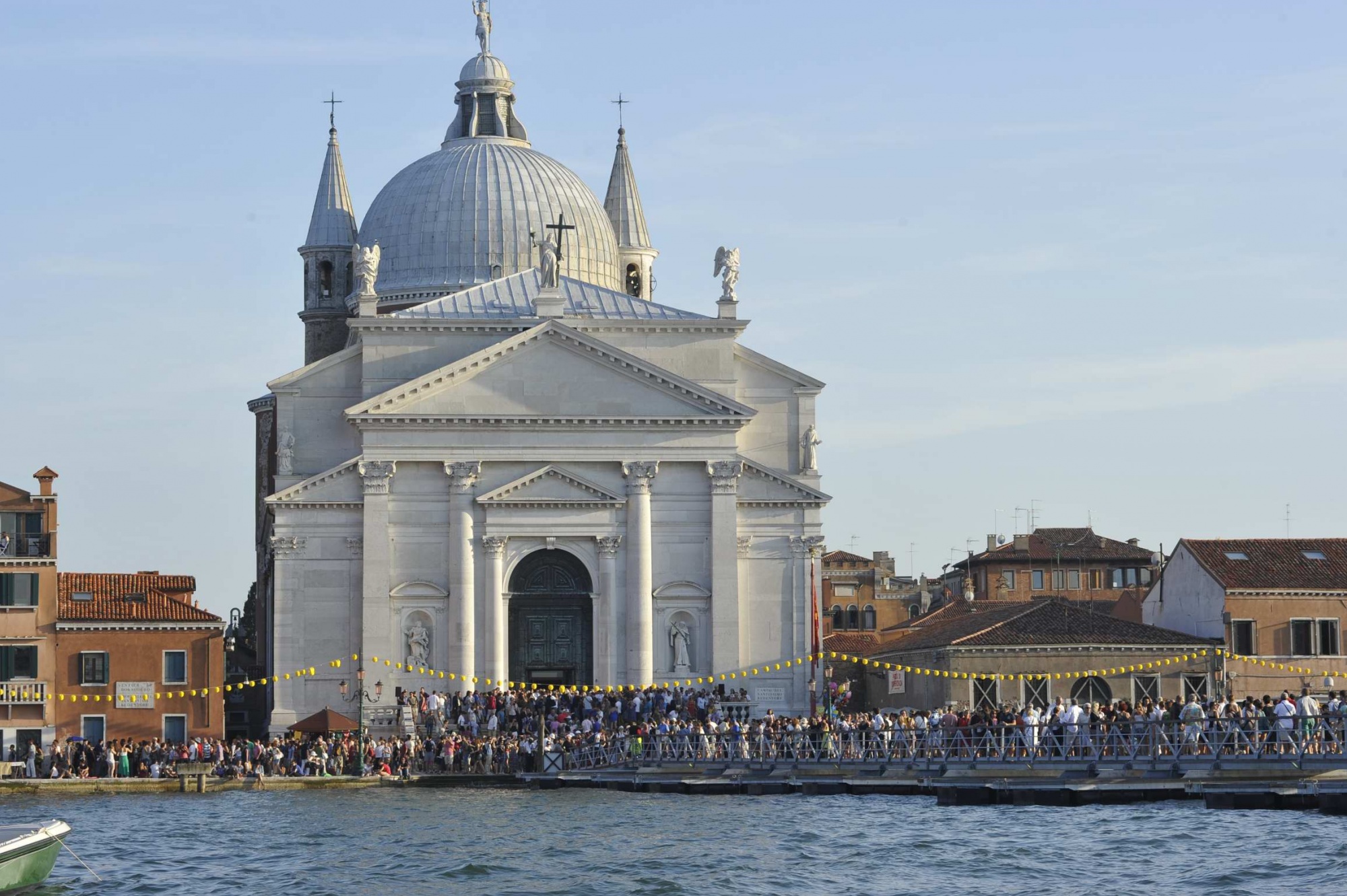Imagine a city where almost a third of the population died within a matter of years, with the rest being divided between those sent to deserted, out of the way islands in quarantine and those who you couldn’t help but see as a personal threat of deathly contagion; that was Venice during the plague, and since no scienitfic reason was to be had or understood, the only possible explanation Venetians could find was that God was punishing the city and its people. So what else to do, but build a church as a peace-offering in sign of a collective redemption? This, along with various other buildings in Venice, is how the Chiesa del Redentore, dedicated to Christ the Redeemer, was built; a majestic example of Renaissance architecture, Palladio’s Redentore became a destination for pilgrims who wished to honour the end of the plague. So to this day, every July a bridge connects the Zattere to the church entrance on the Giudecca, and though the fesitivity has certainly lost some of its religiousness, the whole Giudecca canal is carpeted with boats, canoes and yachts where people eat, drink and dance to music before enjoying the midnight fireworks. Truly a unique, wholly Venetian, experience.






